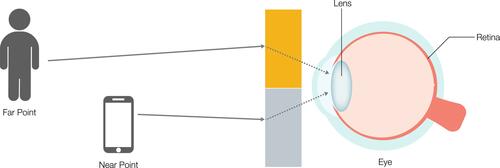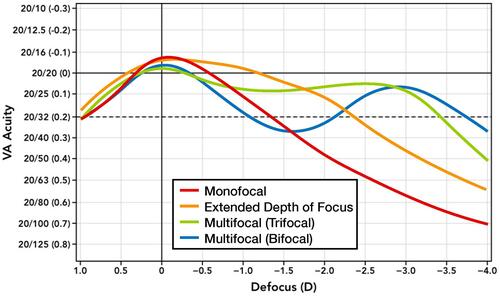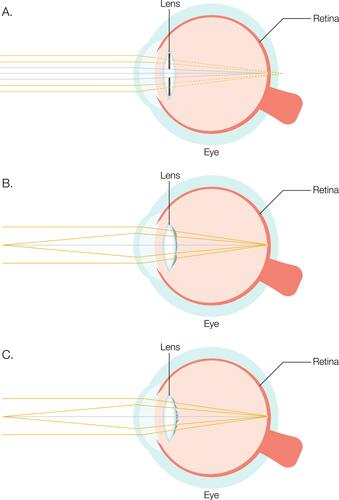Figures & data

Table 1 Overview of Mechanisms for Correcting Presbyopia Subcategorized by Method, The Area of the Eye Where the Mechanism Has Effect (“M”), and Location of Application (“A”)
Table 2 Relative Advantages and Disadvantage of Differing Approaches for Varying Refractive Power to Achieve Functional Through Focus
Figure 1 Varying the refractive power over time describes the eye’s natural ability to shift focus from far objects (person) at time 1 (t1) to near (smartphone) at time 2 (t2).

Figure 2 Varying the refractive power across the field requires optics that utilize two or more focusing zones. In this example, representing a bifocal correction, objects at far (person) are focused by an optic powered for far (orange rectangle), and objects at near (smartphone) are focused by an optic powered for near (grey rectangle). The viewer must either move the optic itself or physically adjust the eye gaze to utilize the appropriate viewing zone.

Figure 3 Varying the refractive power between eyes, or monovision, ultimately depends on binocular summation within the visual cortex of the brain. Objects at far (person) are focused by one eye (Eye 1) that is appropriately powered for viewing (indicated by a solid arrow) and a defocused image (indicated by a dashed arrow) is perceived by the fellow eye (Eye 2). The opposite is true for near objects (smartphone). The resulting image is reorganized via binocular neural summation to add focused and defocused images in the visual cortex.

Figure 4 Varying the refractive power across a range of distances (pseudoaccomodation) achieves simultaneous focus from far (person) to near (smartphone). In this illustration, an iris pinhole optic provides pseudoaccomodative ability.

Figure 5 Representative defocus curves associated with various methods for varying the refractive power across a range of distances.

Figure 6 Varying refractive power across a range of distances may be accomplished by one of three mechanisms. Small Aperture/Pinhole Optics (A) function to block peripheral unfocused light rays, while focused light rays reach the retina. Refractive Optics (B) utilize multiple focusing zones. Diffractive Optics (C) leverage interference patterns to create zones/ranges of focus from far to near.

